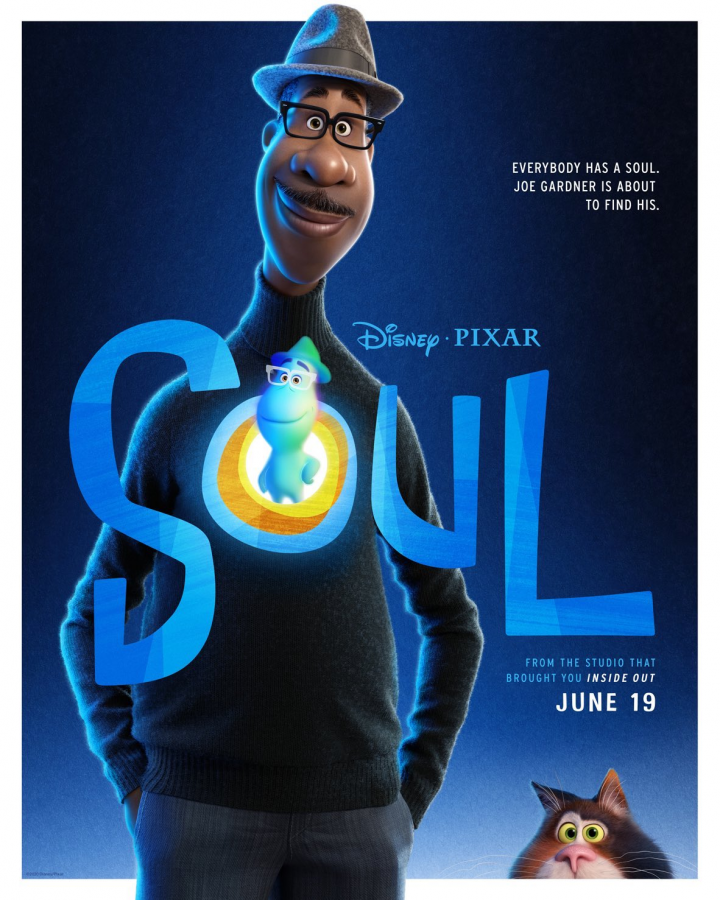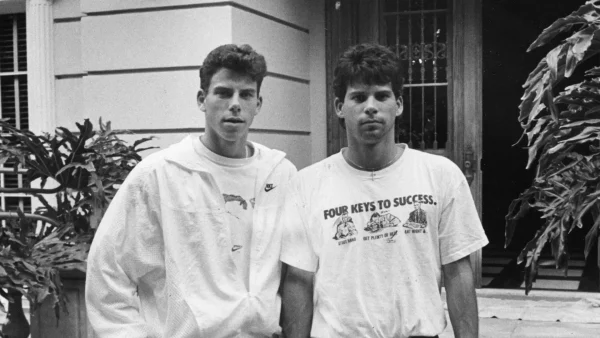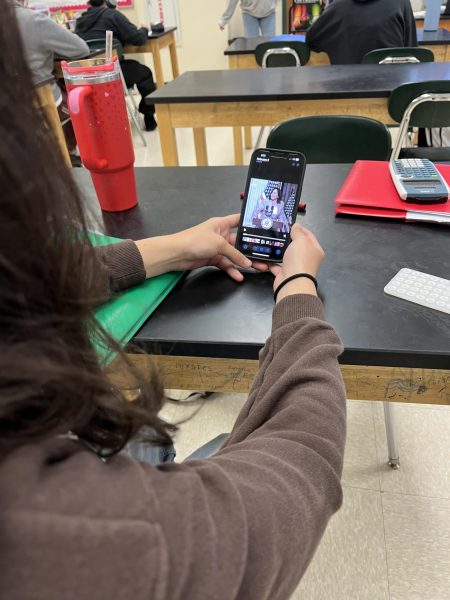“Soul” movie review: Finding your spark
Pixar’s “Soul” is available to watch on Disney +.
Disclaimer: Some opinions and statements reflected below may reveal certain aspects of the plot. Please note that scenes, characters, and plot developments are referenced from Soul, The Princess and the Frog, and The Emperor’s New Groove.
Another new Pixar film added to Disney’s streaming service Disney+, Soul is a remarkably entertaining and touching animation that captivates the interest of young and old alike.
The film was expected to be released on June 19, 2020, but due to COVID-19, the studio kept postponing the release date.
On December 25, 2020, Pixar’s Soul was released on Disney+. Even though the budget for the film was $150,000,000, it has grossed $111,700,000 in the international box office according to Box Office Mojo and IndieWire. It has earned a score of 95% Rotten Tomatoes on the Tomatometer.
At the 78th Golden Globe Awards on February 28, 2021, Soul took home the award for Best Animated Picture and Best Motion Picture Score. It beat out the other nominated films, including The Croods: A New Age and Onward. Check out Movie Review: “Onward” not a typical Pixar film for my take on Pixar’s Onward when it was released last year.
The plot of Soul surrounds the experiences of Joe Gardner (voiced by Jamie Foxx), a middle school band teacher who has a passion for jazz. He dreams of performing his music on stage instead of teaching. His seemingly boring life transforms after a day of good fortune when he lands a gig with the legendary saxophonist Dorothea Williams (voiced by Angela Bassett). On that same day, Joe accidentally falls into a manhole, putting himself in a hospital bed with a coma, all within the opening minutes of the film.
Joe then tiptoes the spiritual line between life and death when his soul enters the Great Beyond, essentially the afterlife. Not liking the path ahead which led to The End, Joe escapes and lands in the Great Before, the beforelife.
The Great Before is where new souls are mentored so that they find their “spark” before entering a body in the real world. This spark is the passion that makes you unique – what you are innately born to do in life.
In the Great Before, Joe meets 22 (voiced by Tina Fey), the 22nd soul ever created who has yet to find her spark after going through many mentors. Mentors are souls who lived their life on Earth and now serve to help prepare souls for Earth. 22’s past mentors include famous historical figures, namely Gandhi, Mother Teresa, Marie Antoinette, Abraham Lincoln, Muhammad Ali, and Nicolaus Copernicus.
Joe attempts to mentor 22 in order for him to get back to Earth and fulfill his dreams. Twenty-two acquired a pessimistic outlook after failing at finding her spark time and time again. Hopeless, she feels trapped in the never-ending cycle of failure.
As a result, 22 burrows herself into despair, but also comfort, in the miserable yet predictable cycle she’s in. “Don’t worry, you can’t crush a soul here, that’s what life on Earth is for,” says 22.
She feels she will never find her spark and does not want to even try anymore. In this way, she fears the unknown and feels a sense of security in her consistency, even though it is primarily failure. Pixar, while it may seem clichéd, tastefully clashes 22’s fixed mindset and Joe’s desire for growth and change to create a powerful friendship.
In classic Pixar fashion, this unlikely pair ends up teaching each other valuable lessons and grows as individual people, or rather souls. In this way, Pixar connects with those who feel backed against a wall and unable to break their cycle of failure.
Soul touches upon overarching themes of life and purpose. Its stunning animations appeal to kids while its heavy topics interest older generations.
Among the breathtaking animations are the intricate street scenes decorated with fall foliage and the two-dimensional Picasso-esque figures who operate the Great Before and the Great Beyond. In regular Pixar style, no detail is left out, right down to every precise star in the Great Beyond.
Soul’s exploration in finding one’s purpose, or spark, teaches its audience to pursue their passion.
Initially, Joe is unsatisfied with his progress towards his aspirations and doesn’t feel like his life has turned out the way he dreams. He says, “I’m just afraid that if I died today my life would have amounted to nothing.”
Even so, he’s optimistic and dreams of performing on stage. He says, “Life is full of possibilities. You just need to know where to look.”
Soul never really answers the question to the purpose of life. And that’s okay.
Pixar sheds light on the idea that it is perfectly fine to be unsure of your purpose. Soul emphasizes the importance of pursuing your interests and passions or as Pixar puts it, “What is it that makes you… YOU?”
Matt Zoller Seitz, the Editor at Large of RogerEbert.com and TV critic for New York Magazine and Vulture.com sums up Soul and possibly every Pixar film for that matter. He writes, “It’s mainly about how things happen in these films, rarely about what happens. Pixar makes it all look easy, even when hundreds of people worked on the project.”
Soul has received applause for its representation of people of color in prominent film roles, as Joe Gardner is the first Black lead character in a Pixar film. However, the animation has faced some backlash.
According to a review from Nightmarish Conjurings, “This is not more screen time that bucks the norm because the Black person we see is not inhabited by a Black person anymore. Overall, Joe is a Black man in his Black body for less than 20 minutes in the entire film.”
There are other Disney movies where Black or Indigenous characters transform into other beings rather than staying as their own personal identity. These include Princess Tiana into a frog from The Princess and the Frog and Kuzco into a llama from The Emperor’s New Groove.
Some will argue that these transformations take away from the purpose of having a Black, Indigenous, or Person of Color (BIPOC) in a lead role because the character does not actually appear with their racial identity for the entirety of their screen time.
Nonetheless, this step forward in representation of BIPOC in the entertainment industry is a bright note for Pixar and Disney.
The soundtrack of the film was composed by Trent Reznor, Atticus Ross, and Jon Batiste. Not only did Batiste arrange the jazz segments, but his playing style and story are also replicated in the film. His hand movements while playing the piano were mirrored in the animations of Joe Gardner playing the piano on screen.
According to an article by Mandalit Del Barco from National Public Radio (NPR), Co-director Kemp Powers says, “”When Joe is speaking to his class and he tells a story about the first time that he ever heard a jazz musician play, that’s almost verbatim a story that Jon [Batiste] told us.”
The Director of Soul, Pete Docter, has directed three other Pixar films, including Monsters, Inc., Up, and Inside Out. Docter is the Chief Creative Officer of Pixar. He also comes from a musical family as both of his parents were musicians.
In an interview with The Boston Globe, Docter was asked about his interest level in jazz. He said, “Jazz was a huge passion of mine growing up. I played bass in jazz bands. I’m kind of partial to 1940s big bands: Duke Ellington, Count Basie. But animation has this long standing affiliation with music, and jazz specifically: Duke Ellington, Count Basie.”
Famous musicians, such as Herbie Hancock were even consulted to ensure the film’s authenticity.
Music, mainly jazz, plays a major role in Soul, as it does in many Pixar films. Soul’s music provides more than just background noise to fill silence and Docter and the other creators of the film took advantage of this. The soundtrack ties into the themes of the film as many lessons can be learned from the on-the-spot improvisation of jazz.
In my books, Soul earns a 4.5 out of 5 stars. As a fellow musician, I particularly enjoyed the musical influence in the movie. Its plot was touching and the detailed and vivid animations were stunning.
The only downside was the pace and information thrown at the audience in the beginning.
There was too much going on in terms of settings, plotlines, and characters. The scenes felt rushed and cluttered at times and it was difficult to keep track of all the after- and prelife meanings and places. This often distracted from the actual message of the movie, making it almost necessary to rewatch it in order to truly understand all the moving parts.
Even still, the messages in Soul are both heartwarming and valuable.
Soul reminds us that nothing is perfect and there is no cookie cutter, one-size-fits-all answer to life. Instead, we must celebrate every day and live life to the fullest. As Joe discovers, the best thing in life is not the destination but is simply just living. As Batiste puts it, your purpose is “found in the things that make us all unique and [there’s] never going to be another person like you in the world, ever. You’re the only one. You’re one of a kind. And that’s beautiful.”









